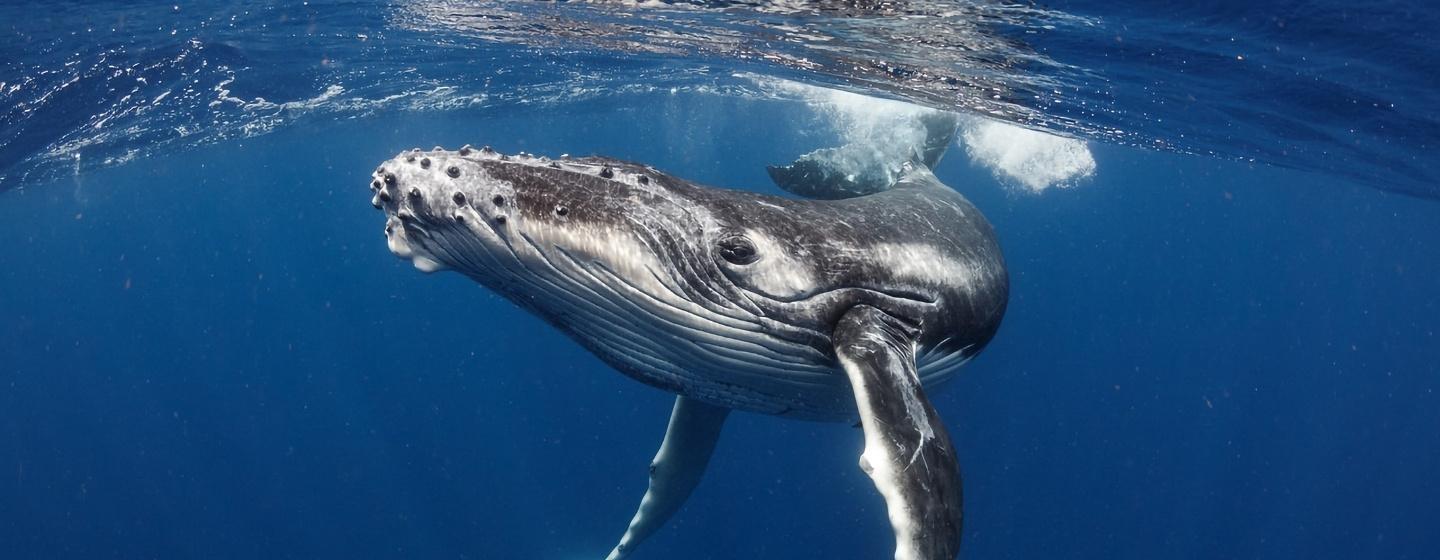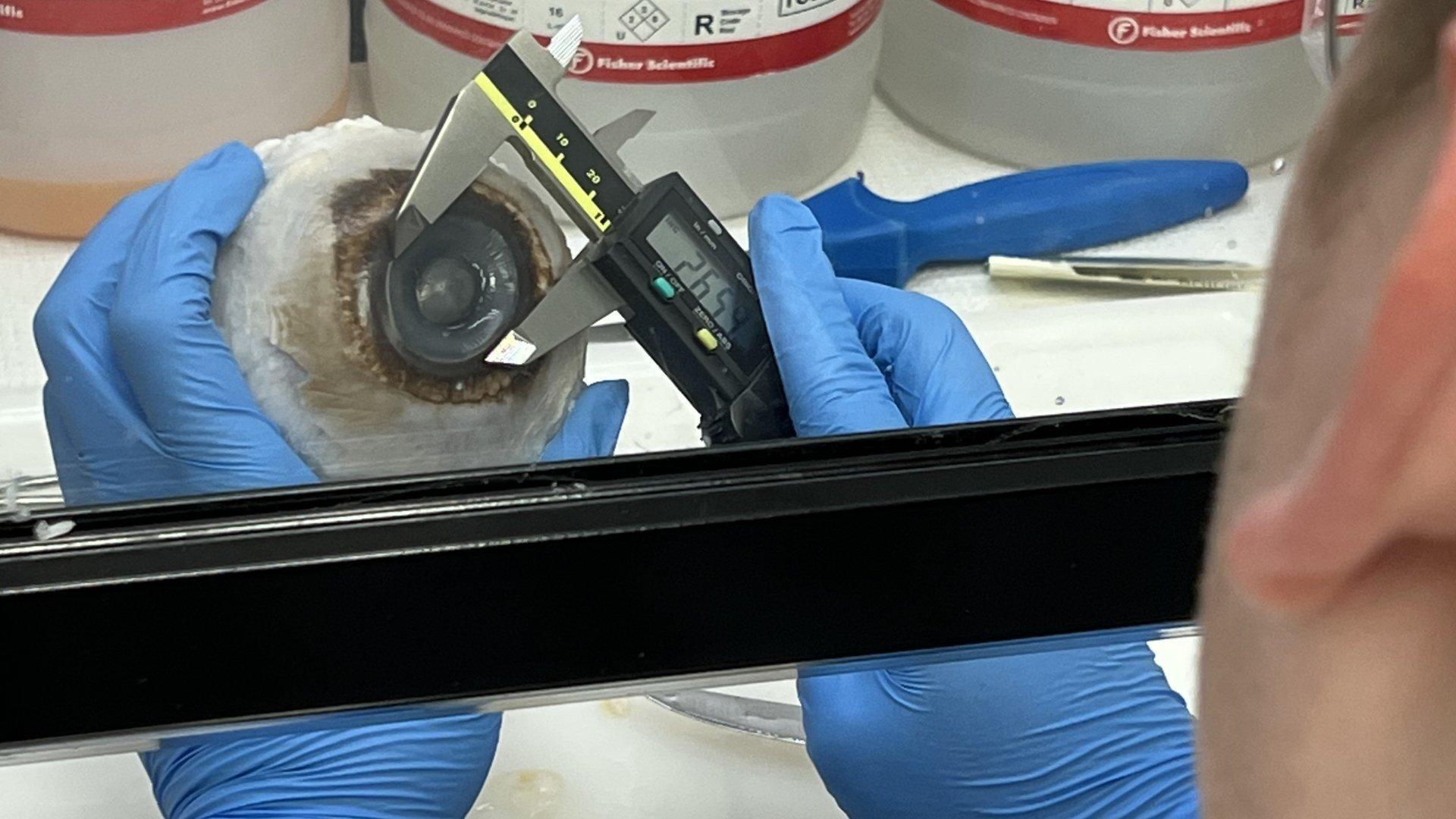Humpback Whales See Less Than We Thought


It would be easy to assume that humpback whales have extraordinary vision. After all, their eyes are the size of softballs. But it turns out nature doesn’t work that way.
Even though our eyes are smaller, “Humans have exceptionally high spatial resolution of vision by comparison to most animals,” Lori Schweikert, Ph.D., an assistant professor of biology and marine biology at UNC Wilmington (UNCW), told Coastal Review. In contrast, “whales have the structure of the eye to support even better vision, but they don’t have that.”
A new study by researchers at Duke University and UNCW found that the magnificent humpback whale has very limited visual acuity, meaning they must be very close to an object to see it in fine detail. That gives a lot of insight into how they see their ocean world and how human activity affects their behavior.

The researchers studied the eye of a juvenile humpback whale that was collected more than a decade ago at Thorofare Bay, NC, by UNCW’s Marine Mammal Stranding Program. The bay is in Carteret County, surrounded by the Cedar Island National Wildlife Reserve and Refuge.
They were able to measure a humpback whale’s vision at 3.95 cycles per degree (CPD). The CPD measures the number of black-and-white line pairs that appear within 1 degree of space. The more lines, the clearer the vision is. Humans have much higher visual acuity, between 60 and 100 CPD, according to the paper.
Here’s an easier way to understand CPD from Schweikert: Hold your arm straight out in front of you and stick your thumb up. The width of your thumb is about one degree of your visual space. Human eyes can resolve about 60 CPD, but humpback whales can only resolve about 3.95 CPD.
Remember, the more lines that can be seen, the clearer the vision.
What that means is that humpback whales can detect large, simple shapes from a distance, but they must be much closer (within 3–4 body lengths) to see fine details.
Researchers also found that a humpback whale’s eye has an unusually thick eye wall. That shortens the eye’s focal length, which is the distance from the center of the lens to the retina. The longer the focal length, the sharper the vision. In other words, a humpback’s vision is not very sharp.
Another limitation was found in the number of retinal ganglion cells. Jacob Bolin, a 2023 UNCW graduate who started the project as his undergraduate honors thesis, describes the cells as “the pixels of the eye.” The neurons convert the image on the retina into electrical signals for the brain. The team found that whales had about 180 retinal ganglion cells per square millimeter. Humans, by comparison, have about 40,000.
The researchers simulated how humpback whales perceive their surroundings. The creatures can see large objects from afar, but details are only visible at a much closer range. But a whale’s vision is just what it needs to navigate its watery world.
“What our research shows is that humpback whales’ vision is well suited to their natural environment and to what they need to survive,” said Schweikert in an email to Sci NC. “However, their vision does not seem resolute enough to see manmade objects if have a lot of small details, like a fishing net.”
Humpbacks prey on large gatherings of fish or krill. When all those fish are silhouetted against light from the surface, they look like a giant ball. That would be easy to spot with poor vision. The same is true when a whale is looking for a mate or trying to avoid a large predator like a great white shark.
But here’s the problem. Whales can’t see fishing nets; entanglement with fishing gear is one of the leading causes of humpback whale deaths. If a whale can’t see objects with fine detail until it is only a few body lengths away, it doesn’t have time to get out of the way.
The findings also explain why vessel strikes are another leading cause of humpback deaths. A ship may look like another whale until it is too late.
More research is needed to combine this understanding of how whales perceive their world with ways to reduce human-created threats like net entanglements. That could lead to designing fishing equipment that is less threatening to whales based on how they see their environment.
Why is marine life eating plastic? Scientists say their sonar is being fooled.